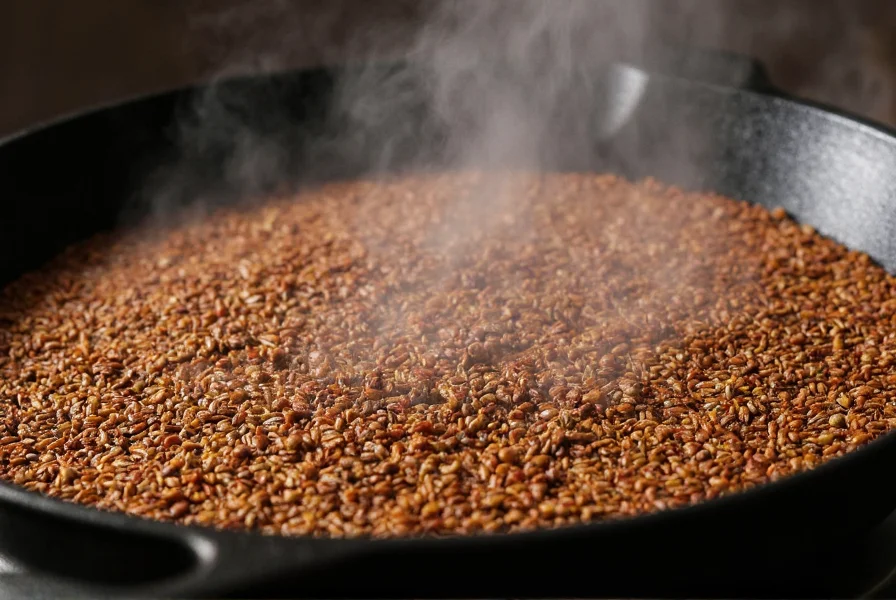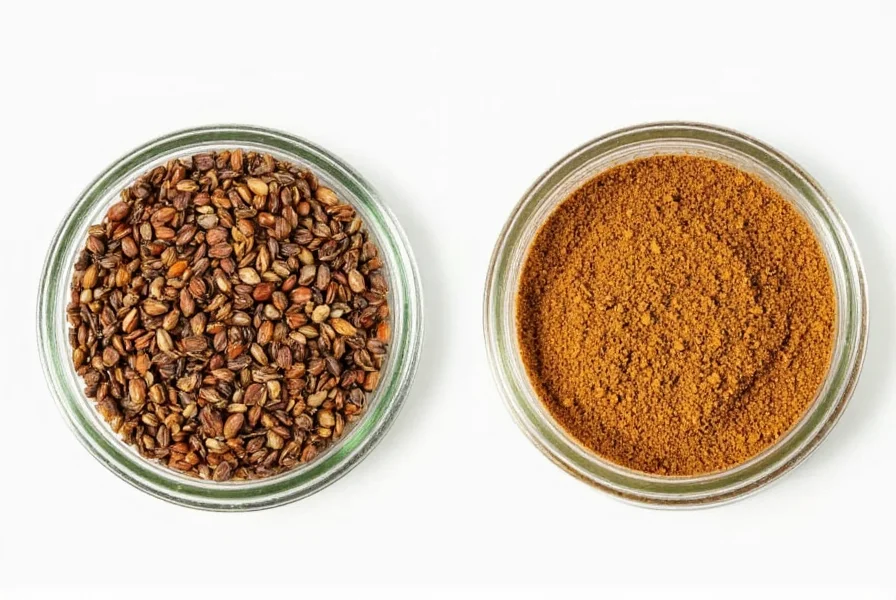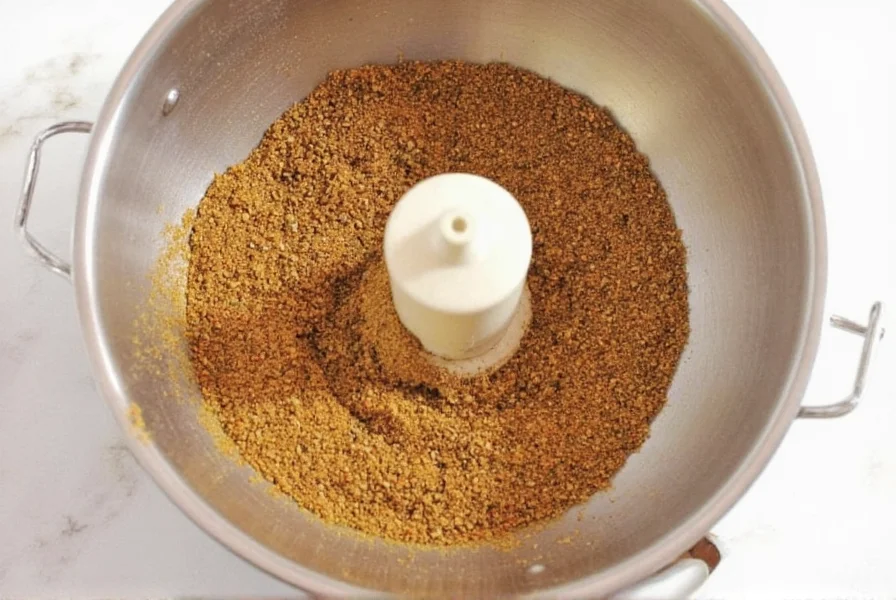Transforming cumin seeds to ground cumin at home unlocks a depth of flavor that store-bought powder simply can't match. This simple process elevates your cooking with aromatic, potent cumin that enhances everything from curries to roasted vegetables. Let's explore why making your own ground cumin matters and how to do it perfectly.
Why Freshly Ground Cumin Outperforms Store-Bought
Cumin's essential oils begin deteriorating immediately after grinding. Commercially ground cumin often sits on shelves for months, losing up to 80% of its volatile compounds. When you convert cumin seeds to ground cumin just before use, you preserve:
- Intense earthy, warm aroma with citrusy notes
- Deeper, more complex flavor profile
- Higher concentration of beneficial antioxidants
- Superior solubility in cooking liquids
Professional chefs consistently prefer freshly ground cumin for these reasons, especially in dishes where cumin plays a starring role.
Equipment Options for Grinding Cumin Seeds
You don't need specialized equipment to transform cumin seeds to ground cumin. Consider these practical options:
| Equipment | Grind Quality | Best For | Preparation Tip |
|---|---|---|---|
| Spice grinder | Fine, consistent powder | Regular use | Clean thoroughly between spices |
| Mortar and pestle | Slightly textured | Small batches | Toast seeds first for easier grinding |
| Coffee grinder (dedicated) | Very fine powder | Large batches | Never use for coffee afterward |
| Blender | Moderately fine | Emergency option | Use highest setting for 60 seconds |
Step-by-Step: Transforming Cumin Seeds to Ground Cumin
1. Toasting the Seeds (Critical Step)
Place 2-3 tablespoons of cumin seeds in a dry skillet over medium-low heat. Shake constantly for 1-2 minutes until seeds darken slightly and release a nutty aroma. Do not skip this step—toasting activates essential oils and makes grinding easier. Remove immediately when fragrant to prevent burning.

2. Cooling Completely
Spread toasted seeds on a cool plate or baking sheet. Let them rest for 5-10 minutes until completely cool to the touch. Grinding warm seeds creates steam that leads to clumping.
3. Grinding Technique
For spice grinders or coffee grinders: Process in 30-second bursts until fine powder forms. For mortar and pestle: Use a circular motion with firm pressure for 2-3 minutes. Stop occasionally to scrape down sides.
4. Sifting (Optional but Recommended)
Pass ground cumin through a fine mesh sieve to remove any larger seed fragments. Return coarse pieces to your grinder for additional processing.
Storage Tips for Homemade Ground Cumin
Freshly ground cumin begins losing potency within weeks. Maximize shelf life with these storage techniques:
- Store in an airtight glass container away from light and heat
- Keep in a cool, dark pantry (not above the stove)
- Use within 4-6 weeks for optimal flavor (vs. 3-4 months for whole seeds)
- Freeze in small portions for up to 6 months
Never store ground cumin in the refrigerator where moisture can degrade quality. Test freshness by rubbing a small amount between your fingers—if the aroma is weak, it's time to make a new batch.
Common Mistakes When Making Ground Cumin
Avoid these pitfalls when converting cumin seeds to ground cumin:
- Skipping the toast step—raw seeds won't develop full flavor
- Overheating seeds—burnt cumin becomes bitter
- Grinding warm seeds—creates moisture and clumping
- Using dull equipment—results in inconsistent texture
- Storing in plastic containers—essential oils degrade plastic
When Freshly Ground Cumin Makes the Biggest Difference
While freshly ground cumin enhances all dishes, it's particularly transformative in:
- Indian curries and dals where cumin is a primary spice
- Middle Eastern spice blends like baharat and za'atar
- Mexican moles and adobo sauces
- Homemade hummus and baba ganoush
- Roasted vegetable rubs and marinades
In these applications, the vibrant, complex flavor of freshly ground cumin becomes a featured element rather than just background seasoning.

Flavor Comparison: Fresh vs. Store-Bought Ground Cumin
Professional taste tests reveal significant differences:
- Freshly ground: Bright, citrusy top notes with warm earthiness and subtle sweetness
- Store-bought (3+ months old): Flat, one-dimensional flavor with occasional mustiness
The difference becomes especially apparent when used in simple preparations like cumin-spiced roasted potatoes or lentil soup where the spice isn't competing with multiple flavors.
FAQs About Converting Cumin Seeds to Ground Cumin
How much ground cumin does one tablespoon of cumin seeds yield?
One tablespoon of whole cumin seeds produces approximately 2½ teaspoons of ground cumin. The slight reduction occurs because grinding eliminates air pockets between seeds.
Can I use a blender instead of a spice grinder for cumin seeds?
Yes, but with limitations. High-powered blenders can grind cumin seeds, but you'll need to use the highest setting for 45-60 seconds and may get inconsistent results. For best texture, process in small batches (1-2 tablespoons) with minimal headspace in the container.
Why does my homemade ground cumin clump together?
Clumping usually occurs when grinding warm seeds (creating steam) or storing in humid conditions. Always cool toasted seeds completely before grinding, and include a silica packet in your storage container to absorb moisture. Sifting after grinding also prevents clumps.
Does toasting cumin seeds before grinding affect nutritional value?
Brief toasting (60-90 seconds) actually enhances bioavailability of cumin's antioxidants without significant nutrient loss. Extended high-heat cooking can degrade some compounds, but the quick toast step recommended for grinding preserves and activates beneficial compounds.
How can I tell if my ground cumin has gone bad?
Stale ground cumin loses its characteristic aroma. Rub a small amount between your palms—if you can't detect a strong, warm scent, it's lost potency. Visually, it may appear duller in color. For best results, replace homemade ground cumin every 4-6 weeks.











 浙公网安备
33010002000092号
浙公网安备
33010002000092号 浙B2-20120091-4
浙B2-20120091-4